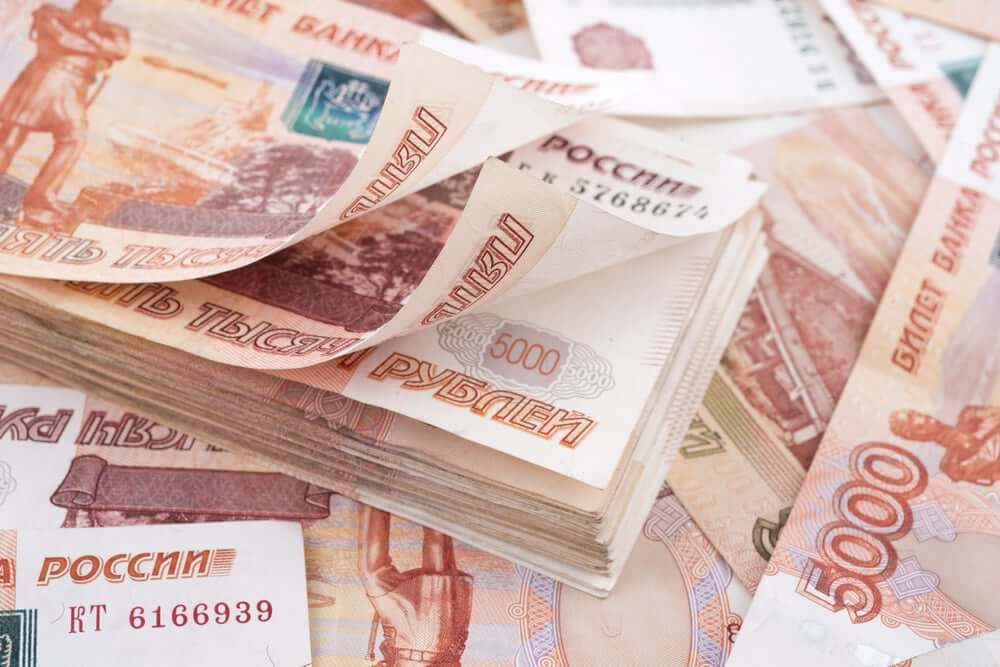
Impact of European sanctions on the USDRUB pair
USDRUB chart analysis
The dollar’s value against the Russian ruble has more than doubled in the last ten years. In 2012 the USDRUB exchange rate ranged from 29.0000-34.0000, while in 2022, the current USDRUB exchange rate was 79.4000. This shows us that the value of the Russian ruble has fallen by two and a half times in the last ten years, and current global developments could continue the further collapse of the Russian ruble. The first major fall in the ruble occurred in 2014 when the conflict between Russia and Ukraine began, and then the USDRUB jumped to 79.5000 level where we are now. Two years later, in 2016, the ruble fell to its historical level of 85.9300, after which the USDRUB exchange rate retreated, and again in 2020 at the beginning of the pandemic climbed above 80,000, forming the current high to 83,000.
It is very likely that we will soon see the USDRUB pair test its historical high again at 85.9300, and if this crisis continues and deepens, even more, we may see this pair at new historical levels on the chart. The pair has technical support in moving averages to continue the bullish trend. Our intermediate target is the previous high from 2020.
Two days ago, the Russian Federation recognized the people’s republics of Donetsk and Luhansk, which provoked sharp reactions from America, the European Union, and the Western world. Such a decision of the Russian president was immediately condemned by many European countries, the United States, as well as NATO Secretary-General Jens Stoltenberg, accusing Moscow of continuing to fuel the conflict.
Western leaders quickly agreed that sanctions should be imposed on Russia for recognizing the People’s Republics of Donetsk and Luhansk because the West believes that Russia has violated all international legal norms.
Ukrainian Foreign Minister Dmitro Kuleba appealed to the world to fiercely target the Russian economy because, as he said, a new act of aggression aimed at Ukrainian sovereignty and territorial integrity.
European sanctions against Russia
The European Union unanimously adopted a package of sanctions against 27 people in Russia and the entities after Moscow recognized the independence of Lugansk and Donetsk.
The sanctions also affected banks, the security sector, and limited access to the European capital market.
All deputies of the Duma are subject to them, including travel bans and freezing of property.
European Foreign Minister Josep Borel said that sanctions are only one part of the European response to Russia’s moves.
“This package of sanctions, which was unanimously adopted by the member states, will make Russia sick, and it will hurt a lot,” Borel said.
“Today, we agreed to include 351 representatives of the Russian Duma, who voted in violation of international law and the territorial integrity and sovereignty of Ukraine, on our list of sanctioned persons,” Borel said.
He adds that EU members have agreed to sanction 27 people and entities that undermine or threaten Ukraine’s integrity, sovereignty, and independence, including those who made decisions that threatened Ukraine, the entities that financed them, those who played a role in invasion and destabilization and those who waged a war of disinformation against Ukraine.
“Sanctions also target economic relations between the EU and the two regions, as we did in the case of Crimea, in order to ensure that those responsible truly feel the economic consequences of illegal and aggressive moves,” Borel said.
He adds that the adopted sanctions affect both the Russian state and the government by preventing them from accessing the EU financial market and services, limiting their policy’s financing.
According to Borel, the package was completed by the decision of Germany to stop the operation of the Nord Stream 2 gas pipeline.



